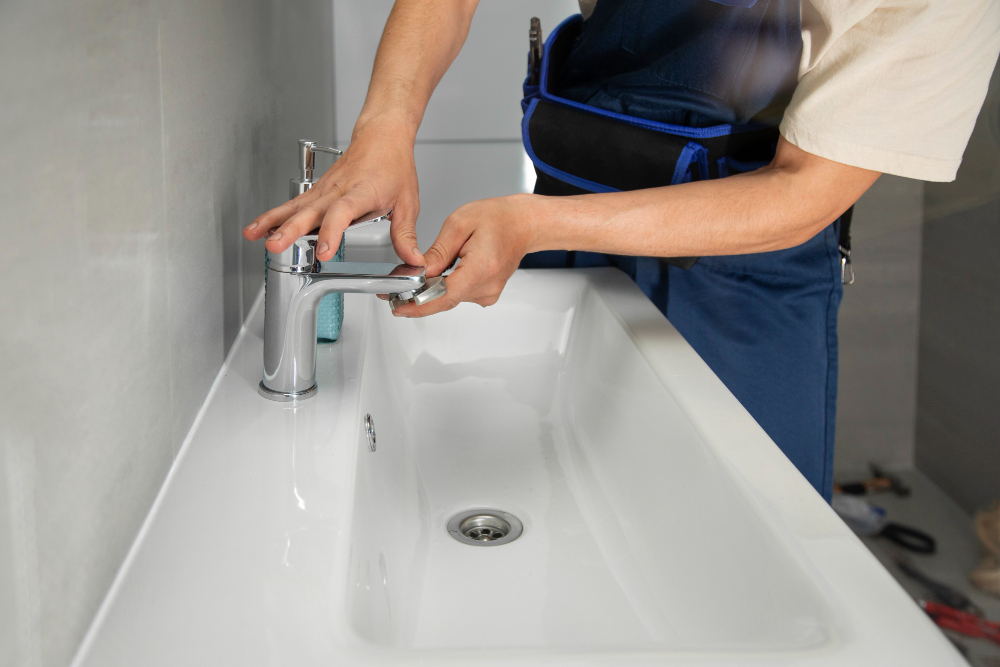Bathroom faucets come in a wide array of styles, designs, and functionalities, making them a crucial element of both the aesthetic and functional aspects of your bathroom. The type of faucet you choose can significantly impact the overall look of the space and enhance your daily routine. Whether you’re renovating your bathroom or simply looking to upgrade your faucets, understanding the different types available will assist you in making an educated decision that aligns with your preferences and needs.
Table of Contents
Toggle1. Single-Hole Faucets:
Single-hole faucets are sleek and compact, making them ideal for smaller bathrooms or modern minimalist designs. As the name suggests, they require only one mounting hole in the sink or countertop. These faucets often feature a single lever or handle for controlling both water flow and temperature. They offer a clean and uncluttered appearance and are easy to install.
2. Centerset Faucets:
Centerset faucets are a prevalent alternative for standard bathroom sinks. They typically have a three-hole installation, with the two handles and a spout (one for hot water and one for cold water) grouped closely together on a singular base. These faucets are versatile and come in various styles, making them suitable for a range of bathroom designs.
3. Widespread Faucets:
Widespread faucets provide a more customized look and are suitable for larger sinks and countertops. They consist of separate components – two handles and a spout – that are spaced apart, requiring three separate mounting holes. These faucets deliver flexibility when it comes to installation and design, allowing you to create a unique and visually appealing arrangement.
4. Wall-Mounted Faucets:
Wall-mounted faucets are mounted on the bathroom wall rather than on the sink or countertop. This type of faucet is both functional and visually striking, making it an excellent choice for contemporary and modern bathroom designs. Wall-mounted faucets free up countertop space and can be paired with vessel sinks for a dramatic effect.
5. Vessel Faucets:
The vessel faucets are developed to be used in conjunction with vessel sinks that sit above the countertop. Vessel faucets are generally elevated to adapt to the elevated height of vessel sinks. Vessel faucets come in a variety of styles, including single-hole and wall-mounted options, and can add a touch of elegance and luxury to your bathroom.
6. Single-Handle vs. Dual-Handle Faucets:
Faucets can have either a single handle or dual handles. Single-handle faucets are convenient for adjusting both water temperature and flow with one hand. They often have a lever or joystick-style handle. Dual-handle faucets have separate handles for hot and cold water. They can provide a classic and timeless look, and some people prefer the precise control they offer over water temperature.
7. Touchless Faucets:
The faucets, also known as sensor faucets, operate without the need for physical contact. They employ motion sensors to detect the presence of hands, allowing water to flow automatically. Touchless faucets are hygienic and convenient, as they minimize the spread of germs and make it easy to control the water flow.
8. Waterfall Faucets:
Waterfall faucets create a visually stunning effect by allowing water to flow like a cascading waterfall. These faucets are often used with vessel sinks to enhance the overall aesthetic of the bathroom. Waterfall faucets can provide a soothing and tranquil ambiance, adding a unique element to your space.
9. Bridge Faucets:
These faucets have a distinctive design with a bridge-like structure that combines cold and hot water handles to the spout. They often have a vintage or traditional look reminiscent of old-fashioned pump-style faucets. Bridge faucets can add a charming and nostalgic touch to your bathroom décor.


